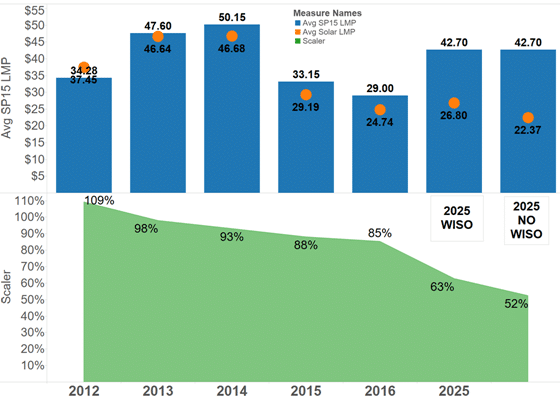
Let’s be honest, designing a community solar product that resonates with customers, utilities, and regulators can be challenging. Many of the products we see in the market overlook customer needs and include unattractive requirements, such as upfront costs and rigid contracts. Designed to mitigate utility risk, these elements actually increase risk by hindering marketing and participation goals. While helping our utility clients launch community solar programs over the last year, we’ve gathered customer insights and marketing lessons that will help smooth the road to success for the many types of community solar products.
1. Warm up the community solar market by boosting awareness and education
There is still work to be done in offering more marketable community solar programs to customers. In our white paper, the Four P’s of Community Solar, we recommended planning for longer sales cycles as a result of premium pricing. After assisting with planning and launching several community solar programs, we can definitively say that the community solar customer’s decision-making process lags behind that of the traditional green power program customer. In our experience, aggressive launch timelines don’t provide adequate lead time for educating customers on the ins and outs of community solar — resulting in lagging sign-ups and confused customers.
Simply put, customers need time to educate themselves on the costs, benefits and terms of a community solar offering as well as how community solar differs from other options, such as rooftop solar. Recent market research on What the Community Solar Customer Wants, conducted by SEPA and the Shelton Group, revealed that 59 percent of Americans are interested in powering their home with solar energy. However, 80 percent of Americans are not familiar with the community solar framework. In our work across the country, we have certainly found this to be true. The good news? Once customers gain an understanding of community solar, 47 percent of them warm up to it and express an interest in participating.
2. Motivate customers with the right pep talk
In order to craft messaging that resonates with community solar customers, it’s essential to understand the participation drivers. While market researchers continue to explore customer motivations behind going solar, our experiences have illustrated that the community solar market isn’t limited to disappointed rooftop solar shoppers. In fact, customer needs differ nearly as much as the variations in community solar products.
Consider the top reasons why customers are interested in going solar. Traditionally, rooftop customers are motivated to save money, achieve energy independence and live more sustainably. With utility-led community solar programs, cost-saving isn’t always part of the offer, therefore it’s important to target the customers who are attracted to sustainability and appreciate ease of participation.
At the end of the day, community solar customers care about doing the right thing for the planet. This sentiment is reinforced time and time again during customer conversations with our nationwide outreach teams. So, it’s not surprising that the Deloitte Resources Study 2016 found that nearly 65 percent of respondents are “very concerned” about climate change and their personal carbon footprint. What does that tell us? Awareness campaigns that lead with environmental benefits can help drive customer interest. And while cost-saving is an ideal benefit, don’t underestimate the power of a well-crafted message focused on sustainability to drive engagement.
Awareness campaigns that lead with environmental benefits can help drive customer interest.
3. Adapt your community solar launch plan to fit the terrain
Part of understanding your target audience is knowing how and when to make your move in the market. There are a number of factors that can impact how receptive customers will be to community solar, ranging from local legislation to cloudy climates. These market drivers — along with how visible solar is in the community — can help inform the timing of program launch and prioritize areas of education.
A direct approach to gauging customer interest in community solar is simply asking them what they want. Despite servicing a rainy climate, one of our northwest utility clients installed dozens of small solar projects across their territory. After raising awareness about the viability of solar in their region, they launched their first local community solar program that filled up fast. Before building more projects, they deployed multiple customer surveys to help them refine and deliver a product their customers wanted. The result? Highly visible community solar projects that sold out in a matter of weeks.
Additionally, brand trust and recognition is an important consideration when building program awareness. While customers may not love their electric utility, a utility is known as a well-established energy provider. This is an enormous benefit when marketing a new product to customers.
4. Pace your expectations for results
Until community solar programs become simpler and more widespread, customers will have questions on what these programs have to offer. Making these answers readily available will be integral to building a positive customer experience. Likewise, the more informed customers become, the more trust and advocacy they’ll be willing to place in community solar programs. The future of community solar is promising, but to ensure customers participate, we must patiently manage our expectations for results while being thorough and intentional in our marketing efforts.
Originally published on GreenBiz.com



Recent Comments